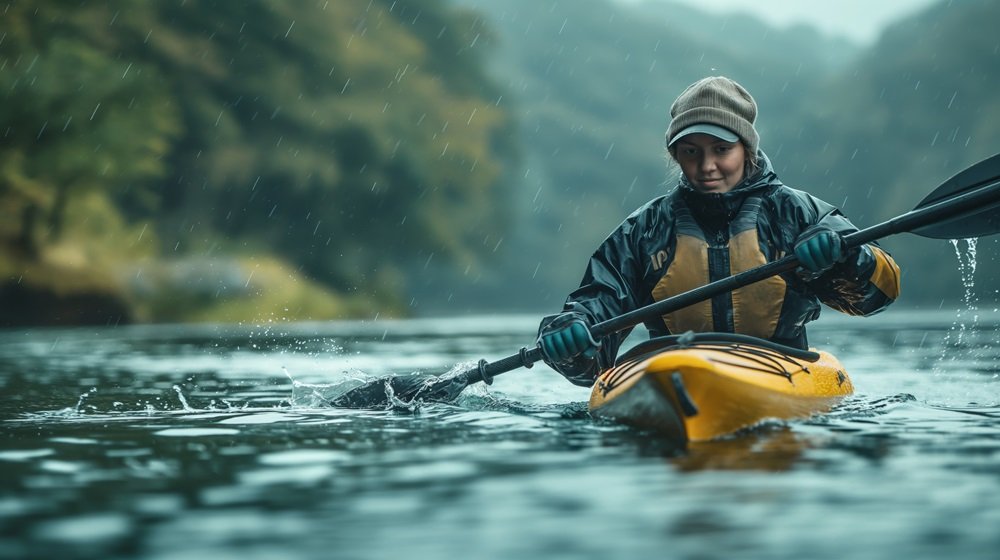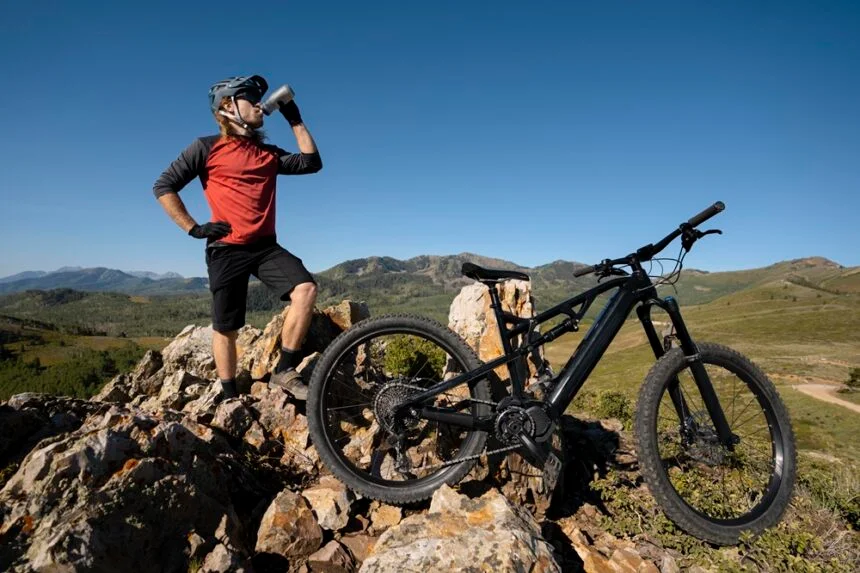Kayaking is thrilling, but staying dry is key to enjoying it. A dry top kayaking keeps water out, letting you paddle comfortably in rough conditions.
A poorly fitted dry top can leak, leaving you soaked and cold. This guide will show you how to fit your dry top properly for a snug, waterproof seal. You’ll learn about sizing, adjustments, and tips to stay dry.
Why a Proper Fit Matters for Your Dry Top?
A well-fitted dry top prevents water from sneaking in through cuffs, neck, or waist seals.
According to a 2023 survey by Paddling Magazine, 70% of kayakers reported leaks due to improper fit.
A good fit also ensures comfort, letting you move freely without chafing. Let’s explore how to get it right.
Choosing the Right Size
Start by checking the size chart for your dry top. Sizes vary, so measure your chest, waist, and height.
Your chest measurement is the most critical because a tight torso seal is key to staying dry.
If you’re between sizes, go smaller for a snug fit, as loose fabric can let water in.
For example, a 40-inch chest might fit a medium, but check the specific chart.
Once you have your size, try the dry top on. It should feel snug but not restrictive.
Raise your arms and bend your torso to ensure you can move comfortably. If it feels too tight or loose, try another size.
| Measurement | Why It Matters |
| Chest | Ensures a tight seal around the torso to prevent leaks. |
| Waist | Keeps the lower seal secure, especially with a sprayskirt. |
| Height | Affects sleeve and torso length for full coverage. |
Adjusting the Neck Seal
The neck seal is often the trickiest part. It’s usually made of latex or neoprene and needs to be tight to keep water out.
A properly fitted neck seal should feel snug but not choke you. If it’s too tight, it can cause discomfort or restrict breathing.
To adjust, gently stretch the seal by pulling it over a smooth object, like a bottle, for a few hours.
Try the dry top on and check for gaps around your neck. If water can slip through, the seal isn’t tight enough.
Test it in a pool if possible to spot leaks before hitting the river. Trim the latex seal carefully if it’s too tight, but only in small increments—about 1/8 inch at a time.
Securing the Wrist Cuffs
Wrist cuffs are another critical seal. They should fit tightly around your wrists to block water.
Neoprene cuffs are easier to adjust than latex ones because they’re more flexible.
If the cuffs feel loose, tighten them with Velcro straps if available. For latex cuffs, stretch them gently or trim them slightly if they dig into your skin.
To test, submerge your arm in water. If water seeps in, the cuff needs tightening.
Check for redness after wearing the dry top for 10 minutes; slight pressure is fine, but pain means it’s too tight.
Pairing with a Sprayskirt
Your dry top works best with a sprayskirt to create a full waterproof barrier. The waist seal of the dry top should overlap the sprayskirt’s tunnel.
Ensure the waist seal is snug to avoid gaps where water can enter. Adjust the waist with drawcords or Velcro for a tight fit.
A 2022 study by Kayak World found that 85% of dry top leaks occur at the waist due to poor sprayskirt pairing.
When fitting, sit in your kayak and attach the sprayskirt. Lean forward and twist to mimic paddling.
If the dry top pulls away from the sprayskirt, adjust the waist tighter. A good seal feels like a second skin, keeping you dry even in rough water.
Testing Your Fit on the Water
Before a big trip, test your dry top in real conditions. Paddle in calm water first, then try rolling or splashing to check for leaks.
Pay attention to the neck, wrists, and waist—these are the most common leak points.
If you feel water trickling in, note where and adjust the seals back on shore.
Maintenance Tips for Long-Lasting Seals
To keep your dry top waterproof, rinse it with fresh water after every use to remove salt or dirt.
Store it in a cool, dry place away from sunlight, as UV rays can damage latex seals.
Check seals regularly for cracks or wear. A small tear can ruin the waterproofing, so repair it with a patch kit or replace the seal.
Common Mistakes to Avoid
Many kayakers rush the fitting process, leading to leaks. Don’t skip trying the dry top on before buying—it’s not just about size but how it feels on you.
Avoid over-tightening seals, as this can cause discomfort or damage. Never ignore small leaks; they’ll worsen over time.
Finally, don’t assume a dry top fits perfectly out of the box—always adjust and test it.

Final Thoughts on Dry Top Kayaking
Fitting a dry top for kayaking takes time, but it’s worth it to stay dry and comfortable.
Measure carefully, adjust seals, and test in real conditions. A proper fit means no leaks, letting you focus on paddling.
With these tips, you’ll master the art of dry top kayaking and enjoy every adventure on the water.
Frequently Asked Questions
Why is proper fit so important in a kayaking dry top?
Answer:
A proper fit prevents water from leaking through the neck, wrist, and waist seals. According to a 2023 Paddling Magazine survey, 70% of kayakers experienced leaks due to poor fit. A snug, comfortable fit ensures both dryness and full mobility on the water.
How do I choose the right size dry top?
Answer:
Start with a size chart and measure your chest, waist, and height. Chest size is most important for a secure torso seal. If you’re between sizes, go slightly smaller—loose fits often allow water to sneak in. Try it on and move around to check comfort and mobility.
What should the neck seal feel like?
Answer:
It should be snug but not choking. A good neck seal blocks water without cutting off circulation or restricting breathing. If it’s too tight, gently stretch it over a bottle for a few hours. You can also trim latex seals slightly—no more than 1/8 inch at a time.
Can I adjust the wrist cuffs if they’re uncomfortable?
Answer:
Yes. Neoprene cuffs are easier to adjust using Velcro. For latex cuffs, you can gently stretch or carefully trim them. If water leaks when you submerge your arm, they need tightening. Watch for redness or discomfort—slight pressure is okay, pain is not.
Should I test my dry top before a trip?
Answer:
Absolutely. Try it in calm water, practice rolling or splashing, and check for leaks at the neck, wrists, and waist. Testing before your trip helps you make adjustments and avoid surprises on the water.
What are common mistakes to avoid when fitting a dry top?
Answer:
- Not trying it on before buying
- Over-tightening seals, causing pain or damage
- Ignoring small leaks, which often get worse
- Assuming it’s ready “out of the box” without adjustments
Taking the time to fit and test your dry top can prevent discomfort and keep you dry.
How often should I replace my dry top?
Answer:
With good care, a dry top can last several years. Replace it if the fabric weakens, seals crack or loosen permanently, or leaks persist even after maintenance.

